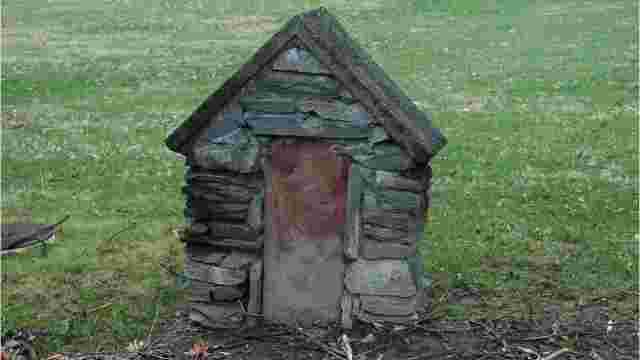Editors Note: Have you ever driven by the Mile Markers along Route 17k (old Cochecton Turnpike) and wonder what they were for. Anthony Musso, Author of Dateline with the Poughkeepsie Journal and author of a series of books titled Hidden Treasures of the Hudson Valley explains:
How much postage did it take to mail a letter in 1775? Mile markers determined cost
By Anthony P. Musso
While driving along today’s Route 9 between New York City and Albany passersby might notice what appears to be an occasional gravestone sitting alongside the road. But rather than identifying a grave, the markers were erected at 1-mile intervals as part of the post office’s early postage pricing process.
In 1775, the Second Continental Congress established the country’s postal system and appointed Founding Father Benjamin Franklin the first postmaster general. He devised a rate system based on miles traveled and the number of sheets of paper being mailed.
Franklin developed a way to measure mileage by attaching a dowel inside a wagon wheel, and based on the circumference of the wheel a clapper would sound at each mile’s interval, with a milepost marker erected. That enabled letter carriers to calculate postage due, which at the time was paid by the recipient rather than sender.
Originating in lower Manhattan at Wall Street and made of sandstone, the markers stand 3-feet high by 18-inches wide and each one was assigned a number to reflect miles traveled. Of the 159 milestone markers placed along Albany Post Road (today’s Route 9) between Manhattan and Albany, 40 existed in Dutchess County.
Because Route 9 has gone through various changes to straighten the route throughout the years, some markers can be found along unlikely roadways, off the main route. For instance, when Albany Post Road wound through the village of Fishkill, marker 69 can be found along today’s Osborne Hill Road, at Hebrew Alliance Cemetery.
Similarly, in Poughkeepsie, where the main route originally veered east up South Avenue to Market, Mansion and Washington streets, marker 81 at the Soldiers Memorial Fountain is now missing, but marker 82 in Pulaski Park still exists.
An obvious shift of Route 9 occurred in 1932 when the main route was relocated from running through the Hamlet of Staatsburg to a bypass road farther east. Two markers in the hamlet on today’s Old Post Road reflect the original route: marker 92 in front of St. Margaret’s Episcopal Church and marker 93, in front of the Locusts estate.
As New York’s governor, Franklin D. Roosevelt passed legislation that placed the responsibility of preserving and maintaining the markers with the New York State Department of Public Works (now Department of Transportation). In 1935, along with help from the Dutchess County Historical Society, the department preserved 22 of the original 40 markers in the county. They are now embedded in stone encasements to protect them.

(Photo: Anthony P. Musso)
Through the years a number of milestone markers became severely deteriorated, damaged and/or vanished due to road construction, disregard or simply due to most people’s unawareness of their historic value.
During the 1970s, when Hyde Park’s Marguerite Spratt noticed markers that were in serious disrepair, she asked her husband James who was responsible to repair them. James Spratt was a civil engineer with the state’s Department of Transportation for 19 years and then was Dutchess County’s Commissioner of Public Works for another 19 years. He developed a slide show to bring awareness to the markers.
“The milestone markers are part of our history and my husband and I felt it was very important to save them,” Marguerite Spratt said. “After a woman in Columbia County saw Jim’s slide show about the markers and asked about the one on the Dutchess/Columbia border, I told her where it was and that it might be buried. She got the highway department to dig it up and its now standing again.”
To view the slide show, visit http://library.marist.edu/archives/online_exhibits.html
“The milepost markers were an important tool for the postal system to calculate postage,” said John Ansley, Marist’s head of archives and collections. “We have one at the north end of the campus and weren’t sure if it was moved. Mrs. Spratt told us to drive from the one on Washington Street and we found the one at Marist to be exactly 1 mile away.”
Posted with Permission from the Author
